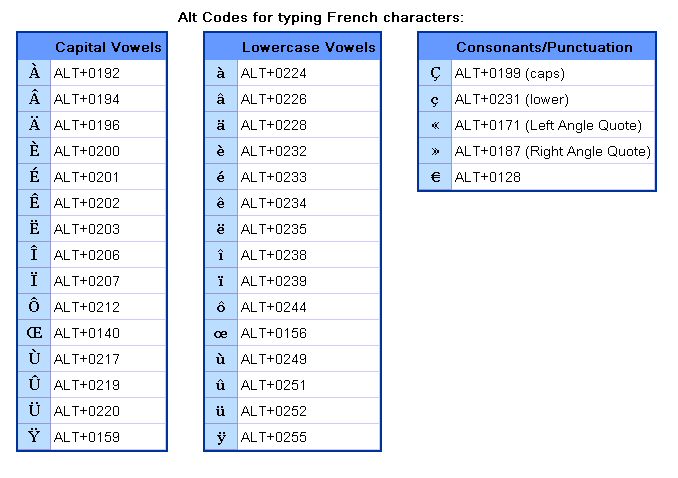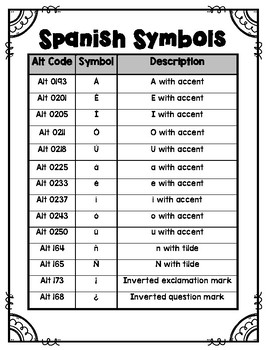

For this, we conducted two experiments of visual lexical decision (with no word production), in which Spanish-speaking participants were instructed to ignore the presence or the absence of the accent mark. The circumflex accent is used in the very same sense also for other vowels, for example île = isle, hôte = “hoste” = host, hâte = haste.The present research aims at determining to what extent an orthographic error related to the accent mark affects the visual recognition of Spanish words. By imagining “es” instead of “ê”, we can often deduce the meaning of unknown words for example, forêt = forest, fête = “feste” = fest(ival) intérêt = interest and many others. For example, être (to be) was originally written estre, which is the link to its Latin origin, esse, which you can still see in English words like “ essential”.Īnyway, since “ê” is basically just a form of writing “es”, which makes the syllable closed (see the next section), “ê” is usually pronounced / ɛ/ (as “e” in “bet”). Ê with the circumflex accent marks an “e” after which originally some other letter was written (usually an S), but this letter is no longer present in its modern spelling. vous av ez) and “-er” in infinitives (e.g. Remember not to write “é” when the pronunciation is already established by the rules, most importantly the endings “-ez” (e.g. It used wherever the pronunciation requires this sound, but the general rules would dictate otherwise if no accent were used. É with the acute accent denotes the pronunciation / e/ (as “e” in “hey” somewhere between “e” in “bet” and “ee” in “see”). amener – j’amène (“take”), lever – je lève (“lift”), peler – je pèle (“peel”). The grave accent has to be used here to mark the correct pronunciation hence we have j’achète, tu achètes, il achète, not “j’achete, tu achetes, il achete”. However, when the verb is conjugated in the singular, it is pronounced / aʃɛt/ (ah-shet). For example, acheter (to buy) is pronounced / aʃəte/ (ah-shuh-teh) or / aʃte/ (ash-teh) the middle “e” is reduced because it is the last letter of the syllable (the syllables are a-che-ter). The letter “è” also commonly appears in verb conjugation. To denote the correct pronunciation / pɛʁ/ (perr), we have to use an “è”. For example, in the word père (father), “pè” is an open syllable (it ends with a vowel), so if the word were spelled “pere”, the expected pronunciation would be / pəʁ/ (puhr). It is used to make it clear that an “e” is not silent and isn’t reduced to / ə/ (uh). È with the grave accent denotes the pronunciation / ɛ/ (as “e” in “bet”, that is, the open e). For instance, naïve is pronounced / naiv/ (nah-eev), whereas naive (a non-existing word) would be pronounced / nɛv/ (nev). This diacritical mark can appear also above other vowels. the open e), no matter what comes around it, and is used in groups of vowels that would otherwise be pronounced differently.įor example Noël (Christmas) is pronounced / nɔɛl/ (naw-ell), whereas “noel” (a non-existing word) would be pronounced / nœl/ (/ œ/ sounds approximately like “ir” in “bird” in British English with lips rounded or like German “ö”). The diaeresis (the two dots) signifies that the underlying “e” is pronounced as / ɛ/ (as “e” in “bet”, i.e. Ë with diaeresis is the easiest case to deal with. The diacritical marks (accents) exist only to distinguish cases where the pronunciation differs from the one established by the standard rules for the letter “e” (you can find these in the next section).

In this post, we shall learn some basic rules you have to know if you want to be understood and sound natural in French. There are four ways to pronounce it: / e/ (as “e” in “hey”, called “closed e”), / ɛ/ (as “e” in “bet”, called “open e”), / ə/ (as “a” in the name “Tina”, called “schwa”), or it can remain silent however, it may also form part of a larger group of letters where the pronunciation may be different. Pronunciation of the letter e in French is ambiguous.
Term for e with an accent mark how to#
It will teach you how to avoid mistakes with commas, prepositions, irregular verbs, and much more.

Tip: See my list of the Most Common Mistakes in English.


 0 kommentar(er)
0 kommentar(er)
